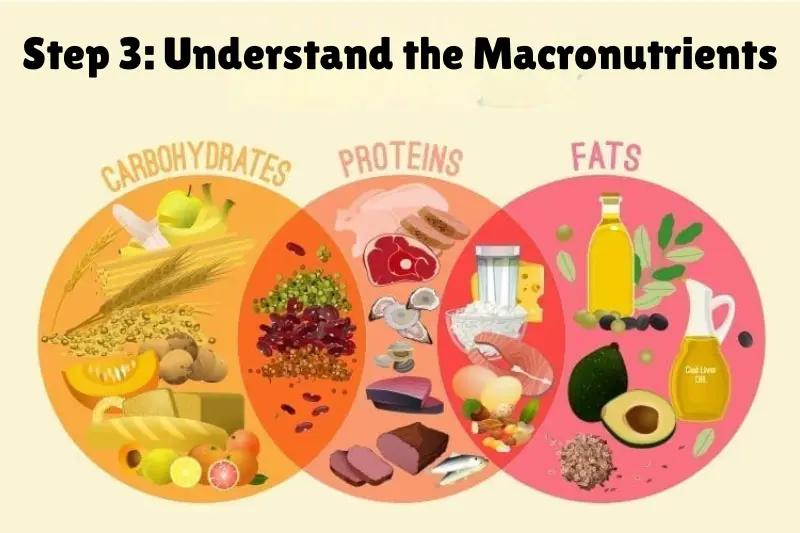In today’s fast-paced world, understanding what we eat is more important than ever. Learning how to read nutrition facts properly on food packages can help you make informed choices about your diet, manage your health, and avoid hidden calories or unhealthy ingredients.
Nutrition labels provide essential information about the contents of what you’re consuming, but they can be confusing if you don’t know what each section means. This guide will walk you through everything you need to know to decode nutrition labels effectively, giving you the tools to make smarter, healthier decisions for your daily meals.
What Are Nutrition Facts?

Nutrition facts are standardized labels found on packaged foods that detail the nutrient content and calorie count of a product. They are regulated by food authorities, such as the FDA (Food and Drug Administration) in the United States, to ensure accuracy and consistency.
These labels serve several purposes:
- Understand calorie content: Know how much energy you’re consuming in a single serving.
- Monitor nutrient intake: Track levels of fats, sugars, protein, fiber, sodium, and more.
- Compare products: Choose healthier options among similar foods.
- Manage dietary needs: Ensure your diet meets requirements for conditions like high blood pressure, diabetes, or weight management.
Understanding nutrition facts is not just about restricting food; it’s about empowering yourself to make choices that support your long-term health.
Step 1: Start With the Serving Size
The first and most crucial step in reading nutrition facts is checking the serving size.
- The serving size shows the amount of food the nutrition facts apply to.
- Every nutrient listed on the label corresponds to this serving.
- Packages often contain multiple servings, so eating more than the listed serving multiplies the nutrient and calorie intake.
Example: A bag of chips may list a serving size of 1 ounce (about 28 grams) with 150 calories. If you eat the whole 3-ounce bag, you’re consuming 450 calories—not just 150.
Tip: Always compare the serving size with the amount you actually eat to understand your true intake.
Step 2: Check the Calories
Calories measure the energy your body receives from food.
- Labels list total calories per serving.
- Calories come from macronutrients: carbohydrates (4 calories per gram), protein (4 calories per gram), and fat (9 calories per gram).
- Some labels also list calories from fat to help you manage fat intake specifically.
Why it matters: Monitoring calories is essential for weight management. Consuming more calories than you burn leads to weight gain, while consuming fewer calories than needed may lead to weight loss.
Example: A snack lists 200 calories per serving. If you consume two servings, your intake doubles to 400 calories.
Step 3: Understand the Macronutrients

Macronutrients are nutrients your body needs in larger amounts. Nutrition labels break them down as follows:
Total Fat
- Includes saturated fat, trans fat, and sometimes polyunsaturated and monounsaturated fats.
- Saturated fat: Limit intake to reduce heart disease risk. Found in butter, cheese, and fatty meats.
- Trans fat: Artificial fats used in processed foods; should be avoided whenever possible.
Cholesterol
- Essential for hormone production but high intake can contribute to heart disease.
- Daily limit: below 300 mg.
Sodium
- High sodium intake can elevate blood pressure and increase heart disease risk.
- Daily recommended limit: about 2,300 mg.
Total Carbohydrates
- Includes dietary fiber, sugars, and sometimes sugar alcohols.
- Fiber: Supports digestion, helps control blood sugar, and promotes satiety.
- Added sugars: Should be limited to maintain healthy blood sugar levels.
Protein
- Essential for muscle repair, immune function, and overall growth.
- Most adults require 46–56 grams per day, but needs vary based on activity level and age.
Tip: Balance your intake of macronutrients according to your health goals.
You may also like to read this:
16 Common Types of Processed Foods You Eat Daily
Why People Prefer Ready-To-Eat Meals For Busy Lifestyles
13 Best Healthy Alternatives To Processed Meals For Everyone
Top Processed Food Brands In The Market Leading Innovation
What Nutrition Facts Mean on Food Labels – Complete Guide
Step 4: Examine the Micronutrients
Micronutrients include vitamins and minerals such as Vitamin A, Vitamin C, calcium, iron, potassium, and more.
- Listed as % Daily Value (%DV) on labels.
- Helps you see how much a nutrient in a serving contributes to your daily diet.
- Quick guide:
- 5% DV or less = low
- 20% DV or more = high
- 5% DV or less = low
Micronutrients are crucial for energy production, bone health, immune function, and overall well-being. Pay special attention to nutrients you may lack in your diet.
Step 5: Pay Attention to the Ingredient List
The ingredient list is equally important as the nutrition facts panel.
- Ingredients are listed in descending order by weight, so the first few ingredients are the most abundant.
- Look for added sugars, artificial flavors, preservatives, and allergens.
- This list helps assess the quality of the food, beyond just calories and nutrients.
Tip: Shorter ingredient lists with recognizable items often indicate less-processed, healthier foods.
Step 6: Use % Daily Values Wisely
%DV is based on a 2,000-calorie diet, which may not match your personal needs.
- Use it as a general guide to identify foods high or low in certain nutrients.
- Helps you spot nutrients you may need more or less of, such as fiber, sodium, or vitamins.
Example: A cereal with 25% DV of fiber provides a significant portion of your daily fiber needs per serving.
Step 7: Watch for Special Claims
Food packages often include marketing claims like:
- “Low fat”
- “High in protein”
- “No added sugar”
- “Gluten-free”
While these claims can be useful, always verify them on the nutrition facts label, as marketing may exaggerate benefits. For instance, a product labeled “low fat” might still be high in sugar or calories.
Step 8: Understand Added Sugars vs. Natural Sugars
Many nutrition labels separate added sugars from total sugars. Understanding the difference is important:
- Natural sugars occur naturally in foods like fruits, vegetables, and dairy. They are accompanied by vitamins, minerals, and fiber, which help your body process sugar healthily.
- Added sugars are incorporated during processing or preparation, such as in soda, candies, baked goods, and flavored yogurts. High intake of added sugars can increase the risk of obesity, type 2 diabetes, and heart disease.
Tip: The American Heart Association recommends limiting added sugar to 25 grams per day for women and 36 grams per day for men. Always check the added sugar line to manage intake effectively.
Step 9: Look at Fiber Content
Dietary fiber is a key nutrient often listed under total carbohydrates. Fiber provides multiple health benefits:
- Supports digestion: Prevents constipation and promotes gut health.
- Controls blood sugar: Slows glucose absorption, helping manage diabetes.
- Promotes fullness: Can help with weight management by reducing overall calorie intake.
Tip: Aim for foods with at least 3–5 grams of fiber per serving to improve daily intake. Whole grains, fruits, vegetables, and legumes are excellent sources.
Step 10: Consider Protein Quality
Not all proteins are created equal. Nutrition labels show total protein per serving, but it’s also important to consider:
- Complete proteins: Contain all nine essential amino acids (found in eggs, dairy, meat, and soy).
- Incomplete proteins: Missing some essential amino acids (common in many plant-based foods).
Tip: For vegetarians or vegans, combine different protein sources like beans and rice to get all essential amino acids.
Step 11: Monitor Fat Quality
While total fat is listed, the type of fat matters for heart health:
- Healthy fats: Monounsaturated and polyunsaturated fats support brain function and reduce inflammation. Found in olive oil, avocados, nuts, and fatty fish.
- Unhealthy fats: Saturated and trans fats can increase cholesterol and heart disease risk.
Tip: Use the nutrition label to reduce saturated fat intake and avoid trans fats entirely.
Step 12: Sodium—Keep It in Check
Sodium is essential for fluid balance, nerve function, and muscle contraction, but most people consume too much.
- High sodium intake is linked to high blood pressure and heart disease.
- Many processed foods, canned soups, sauces, and fast foods are high in sodium.
Tip: Look for foods with 140 mg of sodium or less per serving to help maintain healthy blood pressure.
Step 13: Vitamins and Minerals
Check micronutrients like Vitamin D, calcium, iron, and potassium:
- Calcium: Supports bone health.
- Vitamin D: Helps the body absorb calcium.
- Iron: Important for oxygen transport in the blood.
- Potassium: Helps regulate blood pressure and heart function.
Tip: Choose foods high in micronutrients you may be lacking in your diet. Foods that are nutrient-dense provide more health benefits per calorie.
Step 14: Beware of Misleading Labels
Some products use marketing terms that can be misleading. Examples include:
- “Natural” or “Organic” — Doesn’t always mean low in sugar, fat, or calories.
- “Low carb” — Can be high in unhealthy fats or sugar alcohols.
- “Light” or “Lite” — May refer to color, fat content, or calories, so check specifics.
Tip: Always verify claims by reading the nutrition facts and ingredient list instead of relying solely on front-of-package marketing.
Step 15: Use Nutrition Facts to Make Better Food Choices
Once you understand how to read nutrition facts properly, you can use this information to:
- Plan balanced meals: Ensure you’re getting the right amounts of macronutrients and micronutrients.
- Compare brands: Choose the product with better nutritional content.
- Track intake: Monitor calories, sugar, sodium, and other nutrients if you have dietary goals.
- Improve overall health: Make informed decisions that prevent chronic diseases and support weight management.
Quick Tips to Read Nutrition Labels Properly
- Compare similar products to find the healthier option.
- Look beyond calories—check sugar, sodium, and fat content.
- Prioritize whole foods with minimal processing.
- Adjust for dietary needs, like low-sodium or high-protein diets.
- Double-check serving sizes to avoid underestimating intake.
- Consider nutrient density, not just calories—choose foods that give more vitamins and minerals per calorie.
Final Thoughts
Knowing how to read nutrition facts properly empowers you to take control of your health. Nutrition labels are more than numbers—they are a roadmap to understanding what your body is consuming. By carefully examining serving sizes, calories, macronutrients, micronutrients, and ingredient lists, you can make smarter food choices, manage your dietary goals, and maintain long-term health.
Remember, the goal is not to restrict yourself but to eat mindfully and intentionally, choosing foods that nourish your body while still enjoying the pleasures of eating. Next time you shop, take a moment to read nutrition labels—it’s a simple habit that can have a huge impact on your well-being.
FAQs
1. What are nutrition facts on food labels?
Nutrition facts are standardized labels on packaged foods that show the nutrient content, calorie count, and other important information. They help you understand what you’re eating and make healthier choices.
2. Why is serving size important on nutrition labels?
Serving size tells you the amount of food the nutrition facts are based on. Eating more or less than the serving size changes the calories and nutrient intake, so it’s essential to compare the label serving size with what you actually eat.
3. How do I read calories on a nutrition label?
Calories indicate the energy you get from a serving of food. Labels often list total calories and sometimes calories from fat. Multiply by the number of servings you consume to calculate your total intake.
4. What is the difference between macronutrients and micronutrients?
Macronutrients: Nutrients your body needs in large amounts, including fats, carbohydrates, and protein
Micronutrients: Vitamins and minerals your body needs in smaller amounts, such as Vitamin A, Vitamin C, calcium, and iron.
5. What is % Daily Value (%DV) on nutrition labels?
%DV shows how much a nutrient in one serving contributes to your daily diet, based on a 2,000-calorie diet. It helps identify foods high or low in certain nutrients.




